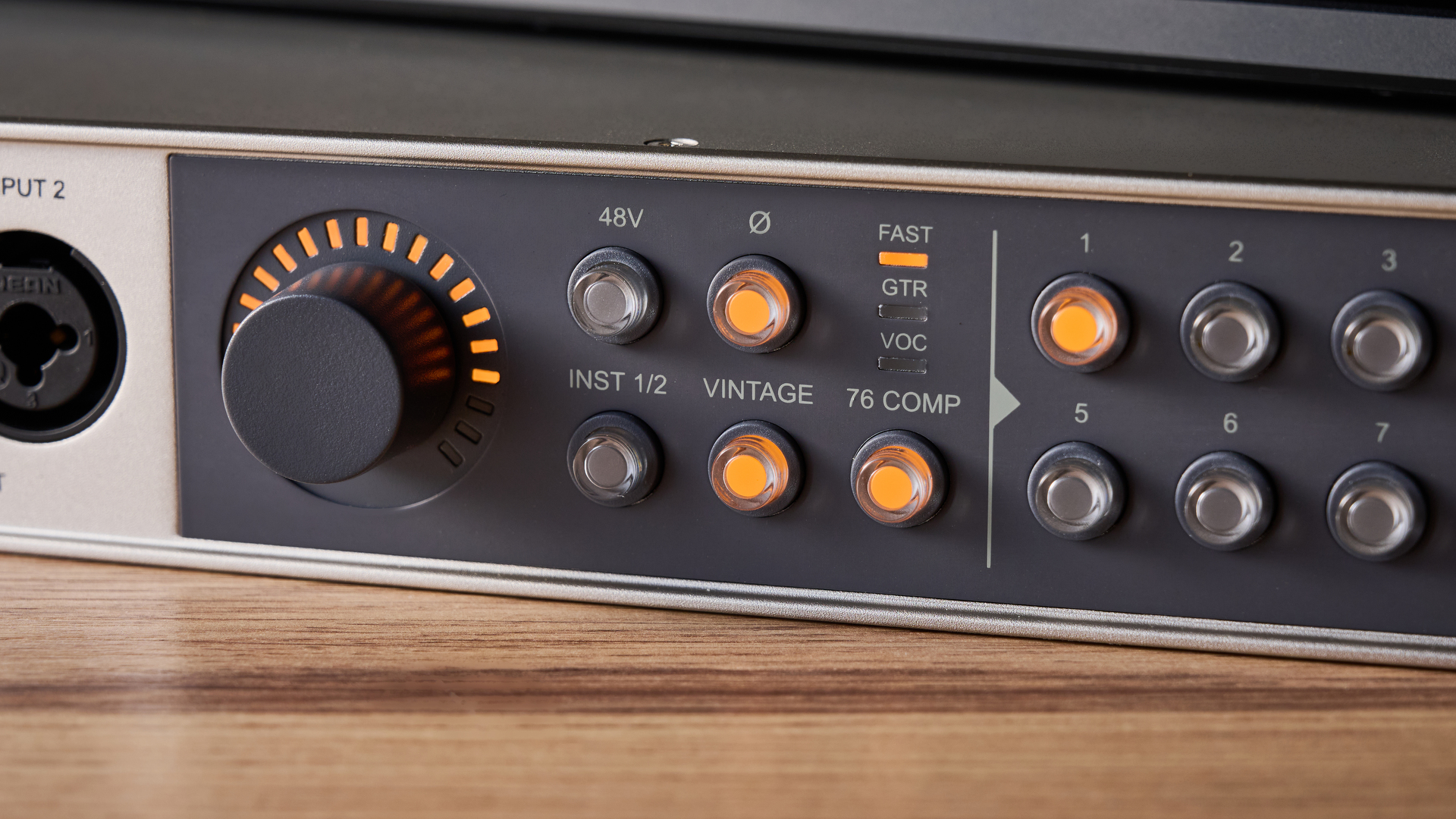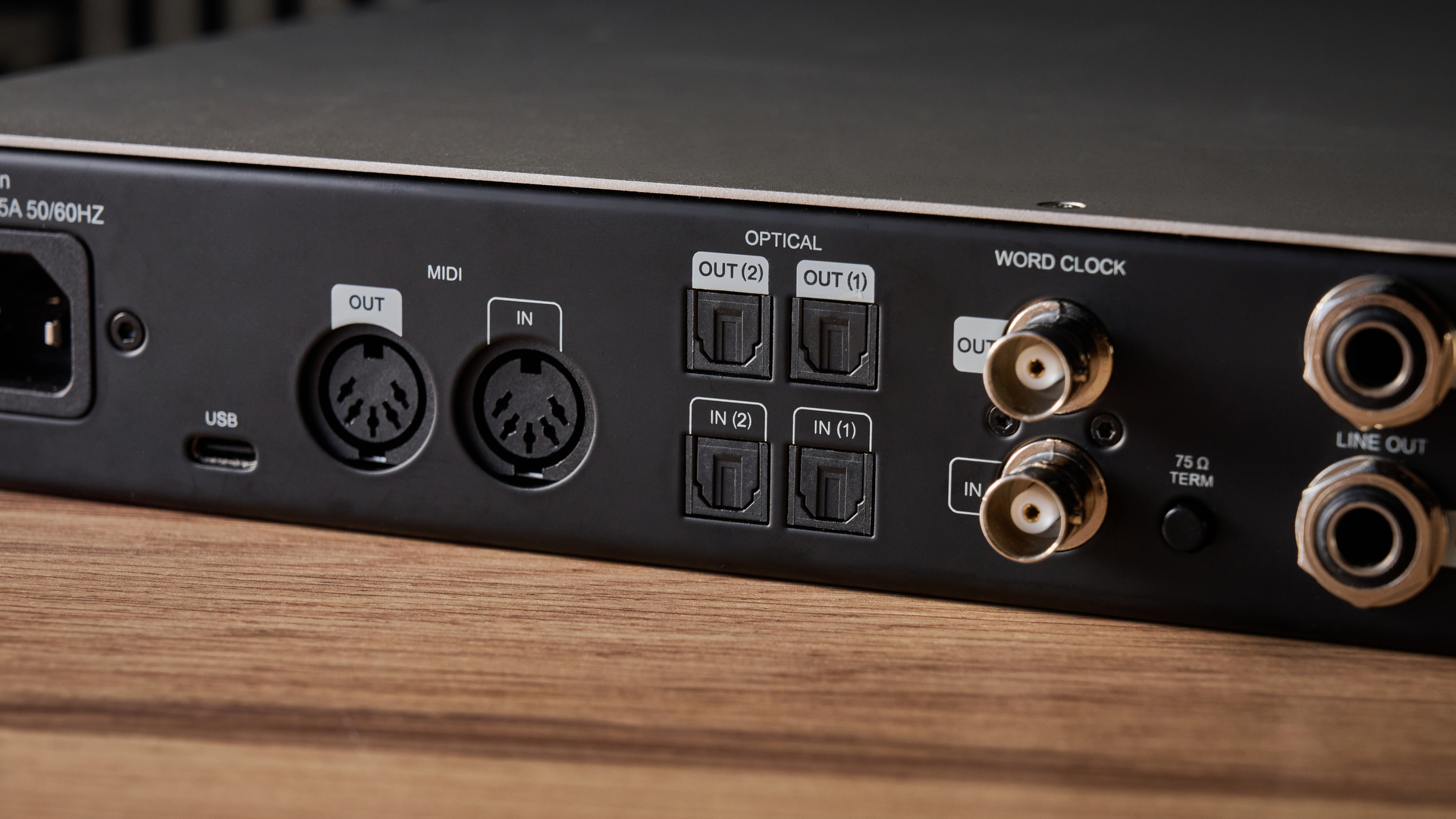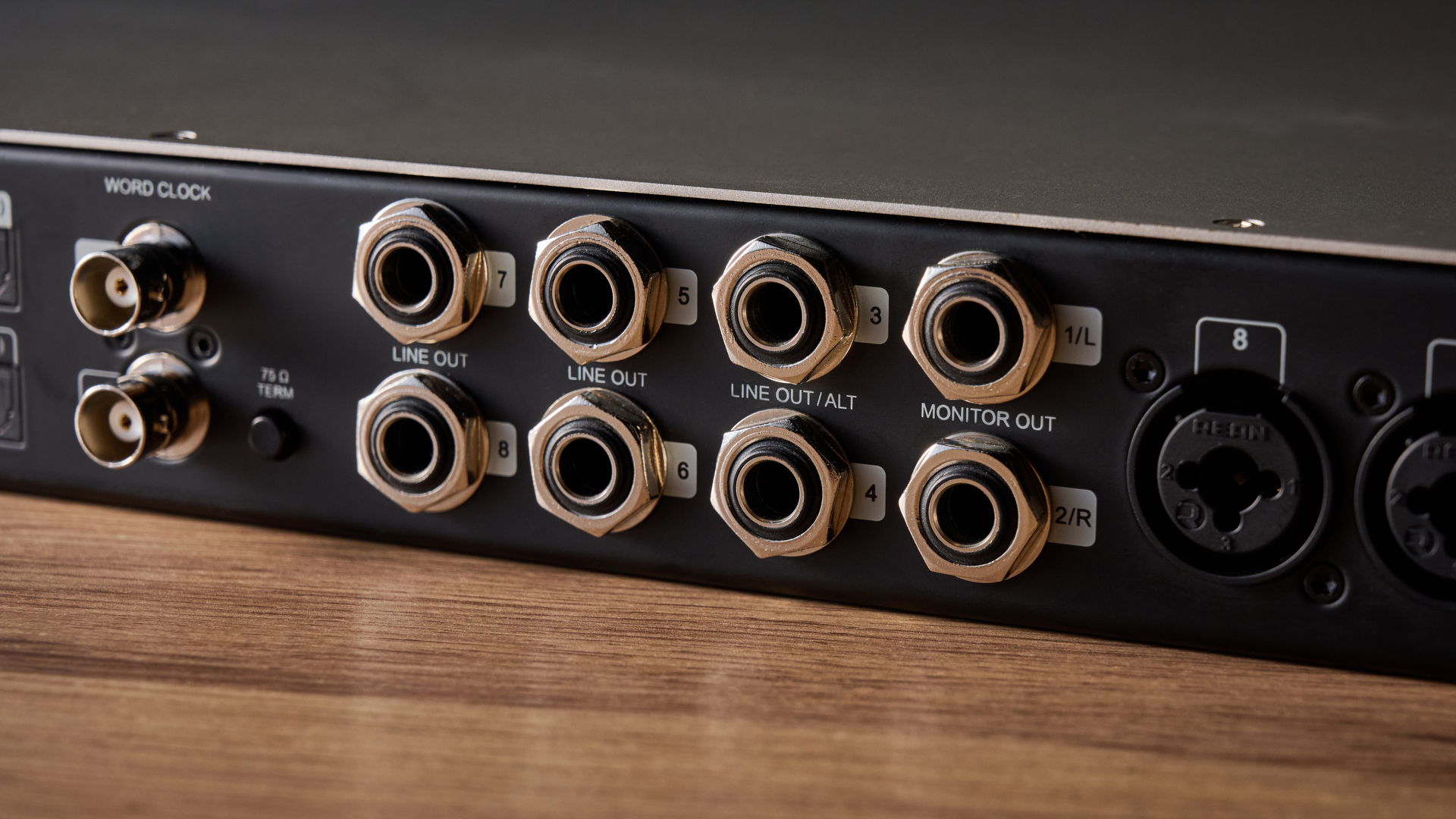
MusicRadar’s got your back
Our team of expert musicians and producers spends hours testing products to help you choose the best music-making gear for you. Find out more about how we test.
What is it?
The newest arrival to UA’s more affordable suite of Volt interface, the Universal Audio Volt 876 is an eight-channel audio interface that provides an ADAT expander for existing Apollo and Volt users, as well as a keenly priced eight-channel interface for musicians looking to record simpler drum setups or capture the sound of their band in rehearsals.
There are a few options available at the moment if you’re looking for eight channels to record with, and the Volt 876 sits in the middle of the cheaper Focusrite 18i20 ($749.99/£649.99) and the pricier Audient iD48 in the US ($1,299.99/£749). Having reviewed both of these previously, I’m in a good position to see where it sits in the pantheon of eight-channel audio interfaces.
The 876 is a 24×28 interface with 32-bit/192kHz AD/DA. It’s got eight digitally controlled microphone preamps, each with an analogue compressor based on the legendary 1176, and a vintage mic pre mode with tube emulation based on the UA 610 console. It’s got 16 channels of ADAT I/O too, so you can rack yourself up a 24-channel interface with three of them, or just expand your existing setup for more complex recordings.
It’s also got an assistive auto-gain function like the 18i20, a built-in talkback mic, cue mixing, and can be remote-controlled via the UAD Console software. As well as the inclusion of UA’s Luna DAW, you get the UAD Producer Suite too, which features plugins like the LA-2A and 1176 compressors, Pultec EQs, a Century Tube channel strip, a couple of tape emulations, delay, reverb, and a guitar VST. You also get some third-party plugins with Melodyne, Ableton 12 Lite, and plugins from Softube, Spitfire Audio, Brainworx, and more.
Performance
As I imagine the vast majority of music makers will be buying an eight-channel interface to either record a band or drums, I elected to test the Volt 876 by taking it into the studio to record some drums. I also decided to make things harder for myself and do away with my usual Pro Tools and use Luna to see how the 876 integrates with the software.
Setting up the 876 with my laptop is an absolute breeze, probably made easier by being an existing Apollo user. It’s not bus-powered, so it uses a kettle lead (IEC) for power, and has a dedicated on switch at the front, which is a nice touch. It plugs in via an included USB-C cable, which has one of those handy attached adapters that let you quickly switch it to USB-A if you need.
I look for a pad switch that’s not there. It’s easy enough to trim the input in the software, but I do find myself wishing there was a quick -10dB cut I could apply here.
My laptop instantly recognises the 876, and it’s a matter of seconds before I’m set up once I’ve installed Luna. I do a small bit of prep here, setting my ins and outs, adding some buses for my drums, and applying some hardware compression to the snare channel and the vintage mode to my room mics. 876 can recall settings if you save them in UAD Console, and handily, it automatically remembers your hardware settings if you’re working in Luna, which makes for quicker setup when I head into the studio.
Enlisting the help of my drummer friend Gaz of Barbarian Hermit, we set up eight mics with kick in, snare top, rack tom, floor tom, plus two overheads, and two room mics in a Blumlein configuration. Once everything was plugged in, I set my laptop on top of the Volt 876 and went through each channel, applying phantom power to the condenser mics I used on the toms and room mics. The interface remembered my settings from earlier, too, so I didn’t need to reapply the compression to the snare channel or the tube emulation to the room mics.
I ask Gaz to soundcheck the kit, setting levels via the large gain knob on the left, and monitoring the inputs in Luna. As soon as we get to the bell brass snare, there’s way too much signal coming in, and instinctively, I look for a pad switch that’s not there. It’s easy enough to trim the input in the software, but I do find myself wishing there was a quick -10dB cut I could apply here. It’s the same story with the floor tom, and although there’s a pad switch on the microphone, it would’ve been quicker and easier to just apply this on the unit itself.
Overall, though, I can’t knock how quick and easy it is to get everything set up, especially having never used it prior to the session. The front panel is very intuitive, with the split functions section and each channel having its own dedicated button; it’s a breeze to cycle through and make changes as I set the levels for the recording. There are LED lights for checking the levels on the unit itself, but I always recommend using your DAW to check your levels.

Although I don’t need to use the talkback function as the interface was in the same room as the kit, I do use the dual headphone outputs to send levels to my drummers’ in-ear monitors. Having dual knobs is handy, as I can set a different level for my own studio headphones to monitor while we’re recording, giving him a lot more juice so he can hear the scratch track and click over the sound of the kit in a large room.
Listening back to the tracks after an initial take, I’m really happy with the sounds. It perfectly captures the sound of the kit in the room, which is all you can really ask for of any audio interface. I’m a firm believer that sound quality is very similar across audio interfaces at this level, and having tested this, the 18i20, and the iD48, I’m inclined to maintain that belief.
Adding that touch of tube emulation to the room mics really brings some life to them without totally overcooking them in saturation, and it’s a similar story with the compression. It’s all light-touch stuff, and I went for the fast setting, which makes sense for tracks with a lot of transients like a snare, although you can also dial in a guitar and vocal setting depending on your particular use case.

Verdict
If you’re looking for an eight-channel interface to upgrade your recording setup, the Volt 876 is an awesome choice. I love the addition of analogue compression on each channel and the tube emulation circuitry, giving you the ability to craft your sounds on the way in, and it’s really easy to use, even if you’ve only ever had a two-channel interface prior.
The only thing I could really criticise is the lack of a dedicated pad switch, which slightly interrupted my hands-on workflow, but other than that, it’s an excellent option for a variety of different musicians. If you already own an Apollo or Volt interface and want to upgrade your inputs, then the 876 is a no-brainer with its UAD Console integration.
MusicRadar verdict: The Universal Audio Volt 876 adds another great option for the musician looking to take a step up from their two-in audio interface, or any band that wants to record in their rehearsal space. It’s super easy to use, sounds phenomenal, offers plenty of upgrade potential, and comes with an excellent software offering.
Hands-on demos
Universal Audio
Alternatives
Specifications
|
Launch price |
$999 | £886 | €975 |
|
Key features: |
Connectivity: USB 2.0 Form Factor: Rackmount/Desktop Simultaneous I/O: 24 x 28 Number of Preamps: 8 Phantom Power: Yes A/D Resolution: Up to 32-bit/192kHz Analog Inputs: 8 x XLR-1/4″ Combo Analog Outputs: 8 x 1/4″ TRS Digital Inputs: 2 x Optical Toslink (ADAT) Digital Outputs: 2 x Optical Toslink (ADAT) Headphones: 2 x 1/4″ MIDI: In/Out USB: 1 x… |



